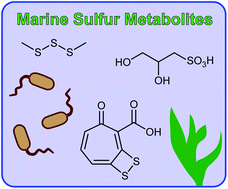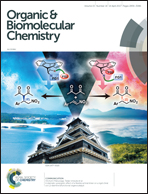Metabolism of 2,3-dihydroxypropane-1-sulfonate by marine bacteria†
Abstract
Both enantiomers of the sulfoquinovose breakdown product 2,3-dihydroxypropane-1-sulfonate, an important sulfur metabolite produced by marine algae, were synthesised in a 34S-labelled form and used in feeding experiments with marine bacteria. The labelling was efficiently incorporated into the sulfur-containing antibiotic tropodithietic acid and sulfur volatiles by the algal symbiont Phaeobacter inhibens, but not into sulfur volatiles released by marine bacteria associated with crustaceans. The ecological implications and the relevance of these findings for the global sulfur cycle are discussed.



 Please wait while we load your content...
Please wait while we load your content...